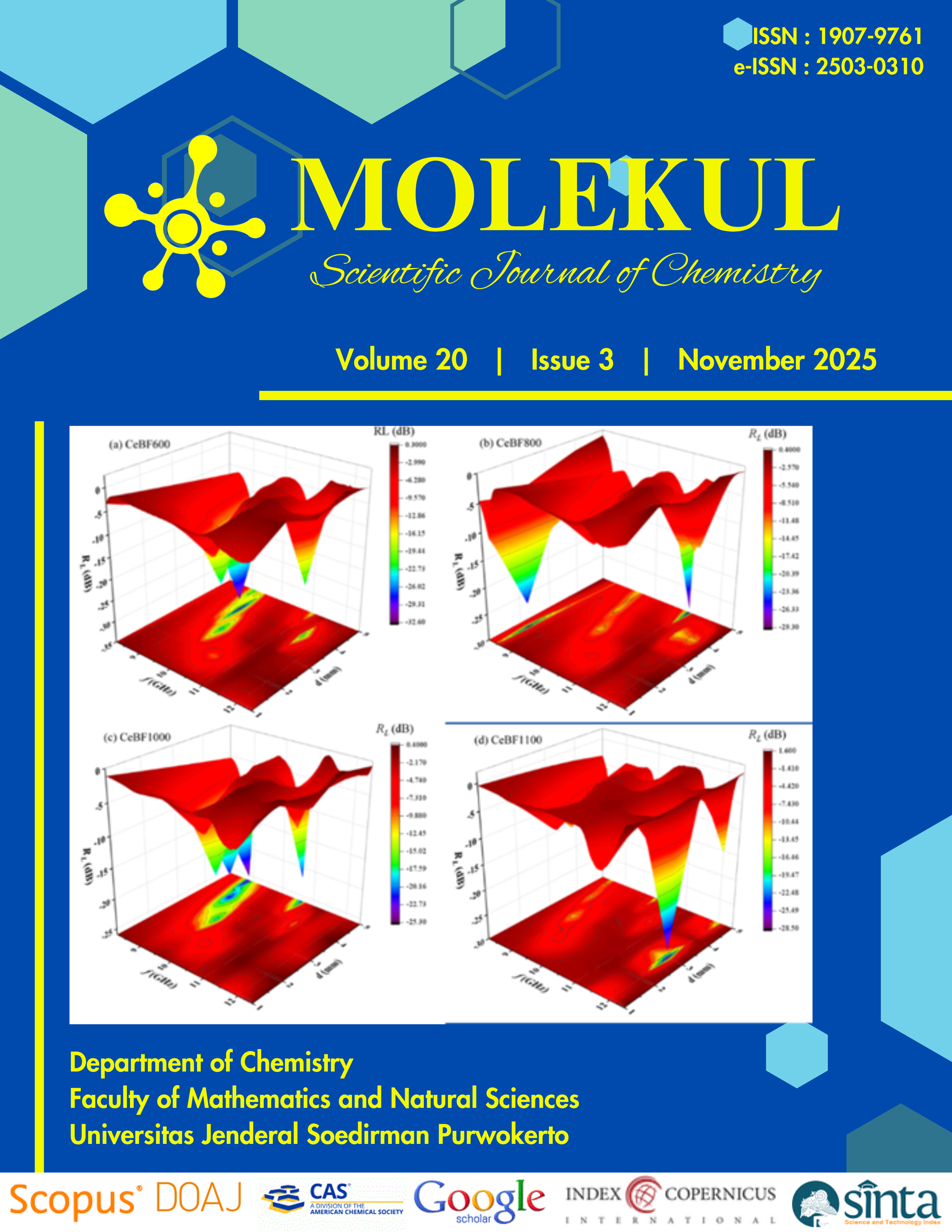The Phenolic Compounds Isolated from Myristica fragrans and Their Cytotoxic Effects on B16-F10 Melanoma Cancer Cell Lines
Phenolic Compounds from Myristica fragrans
Abstract
Phenolic compounds are a major type of secondary metabolite found in plants. These compounds are synthesized through shikimic and phenylpropanoid pathways, resulting in the formation of numerous unique structures and bioactivities. In addition, a significant amount has been reported in nutmeg, an endemic plant of Indonesia, which has been widely used in traditional medicine. A previous study also revealed that ethyl acetate extract of the plant has notable cytotoxic effects against melanoma B16-F10. Therefore, the purpose of this study is to isolate and evaluate phenolic compounds in nutmeg for their potential to inhibit B16-F10 melanoma cancer cell growth. The seeds extract of nutmeg was separated by various chromatographic techniques to yield a total of five compounds, which were identified through spectroscopic analysis (HR-TOF-ESI-MS, IR, and NMR) as well as comparison with literature. The compounds 1-5 were identified as (+)-veraguensin (1), 3',4',5'-trimethoxycinnamyl alcohol (2), (+)-galbegin (3), (-)-polysphorin (4), and 7-methoxycoumarin (5). Cytotoxic effects were then assayed against B16-F10 melanoma cell lines using the Resazurin method. Furthermore, compound 1 displayed the highest cytotoxic activity, with an IC50 value of 112.71 µM.
Authors agree with the statements below:
- Authors automatically transfer the copyright to the MOLEKUL journal and grant the journal right of first publication with the work simultaneously licensed under a Creative Commons Attribution 4.0 International License (CC BY 4.0).
- Authors are able to enter into separate permission for the non-exclusive distribution of the journal's published version of the work (e.g., post it to an institutional repository or publish it in a book), with an acknowledgment of its initial publication in this journal.













